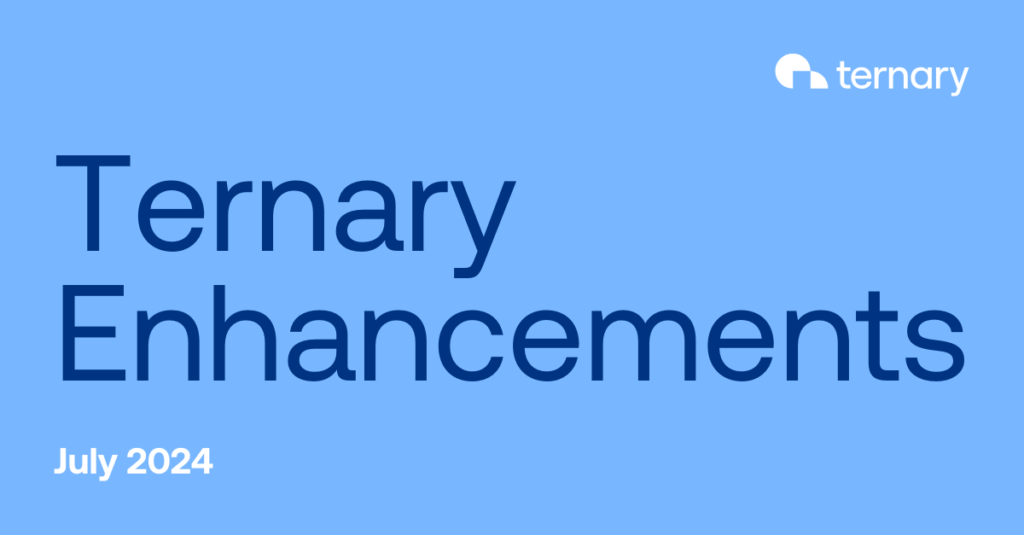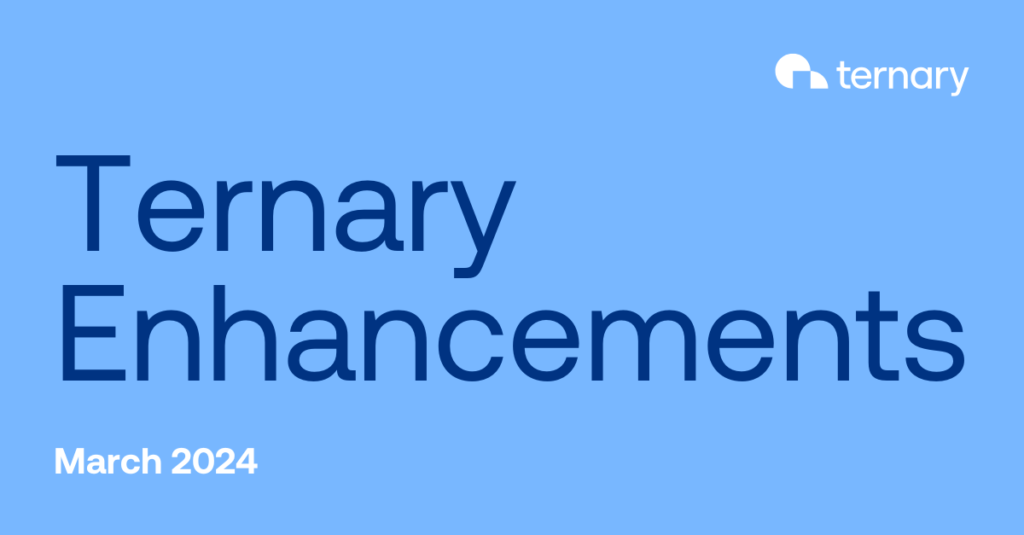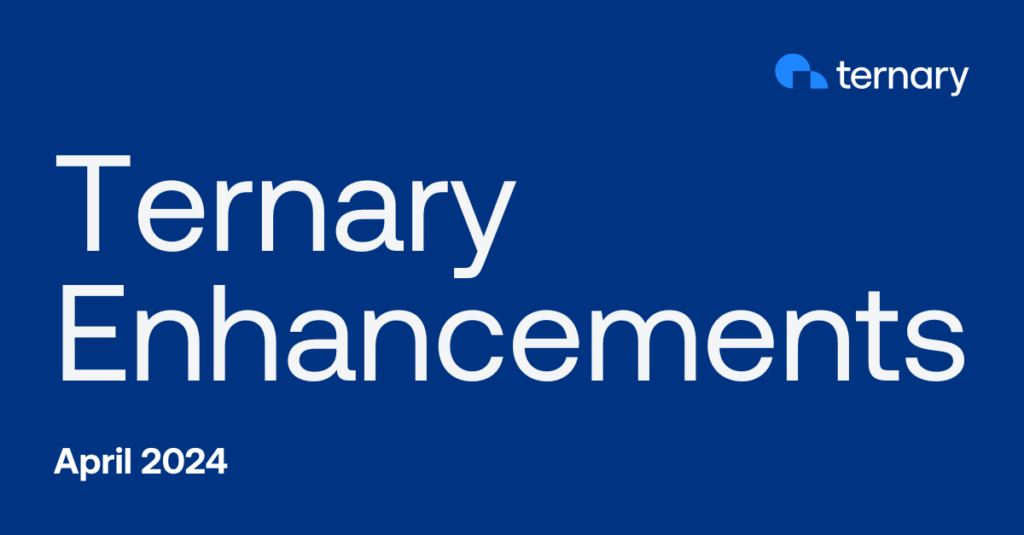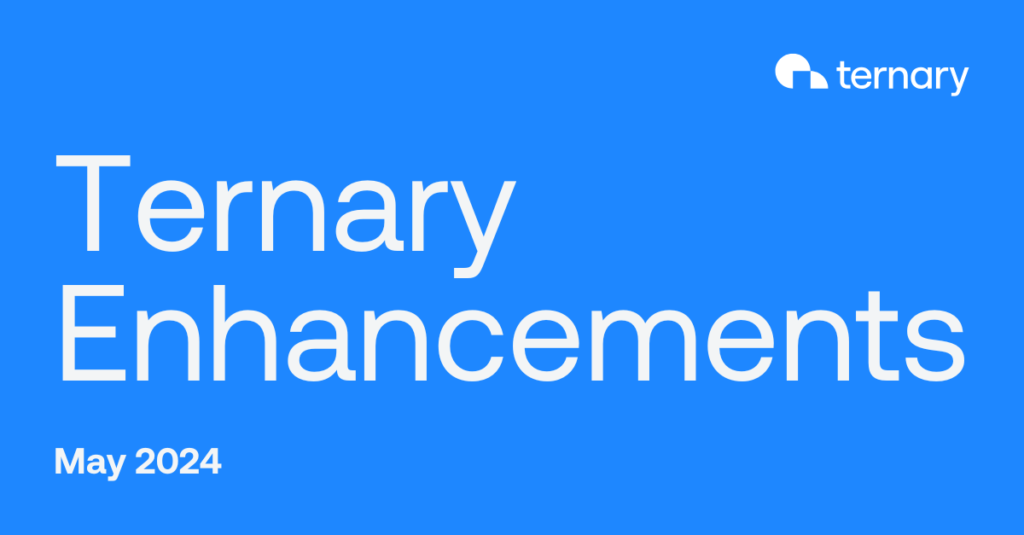Welcome to the July 2024 edition of our monthly blog series, highlighting a few of Ternary’s latest FinOps enhancements. In June, we featured our new MSP Billing Rules Engine, Microsoft Azure optimization, an enhanced forecasting engine, and a new dashboard widget for Realized Savings. Our FinOps roundup for July 2024 includes enhancements to MSP customer management, forecasting, dashboards, Azure cloud configuration, and Ramp Plans.
Purpose-built for FinOps, Ternary empowers organizations to establish cloud cost transparency, improve cost and usage efficiency, and foster communication between teams. Read on to discover how our featured July enhancements help partners and customers progress on their FinOps journey.
MSP Customer Management: settings
Managed service provider (MSP) partners have complete control over their managed Ternary customer tenants across implementation, onboarding, and user management. With our latest release, we introduced a new Settings tab within Ternary MSP Customer Management. MSP Admins can now choose to disable the visibility of cloud configuration and optimization recommendations for all customer tenants. This enhancement may be particularly useful if you offer different tiers of services and want to restrict access to optimization recommendations. Ternary fundamentally understands MSPs’ operational needs—and we’re committed to serving them. (Read more about why Ternary is the leading FinOps solution for MSPs.)
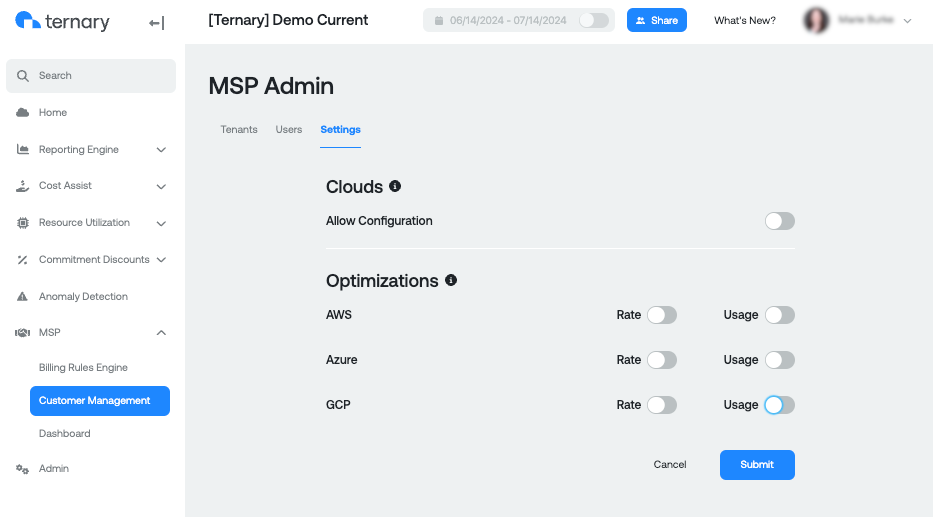
Forecasting: lookback range
In June, we introduced our new multi-cloud forecasting engine to help you better predict your cloud spend. This month, we have updated the forecasting engine to allow you to set the lookback range. You can choose 30 to 180 days of historical data (or any duration between) directly from the Ternary platform. Changes to the lookback range will reload data in the forecasting meters, chart, and table. Additionally, the chart now includes a new filter option. You can now view data either from the current month or across the entire lookback range. This enhancement enables you to further refine the forecast model to inform investment and budget decisions.
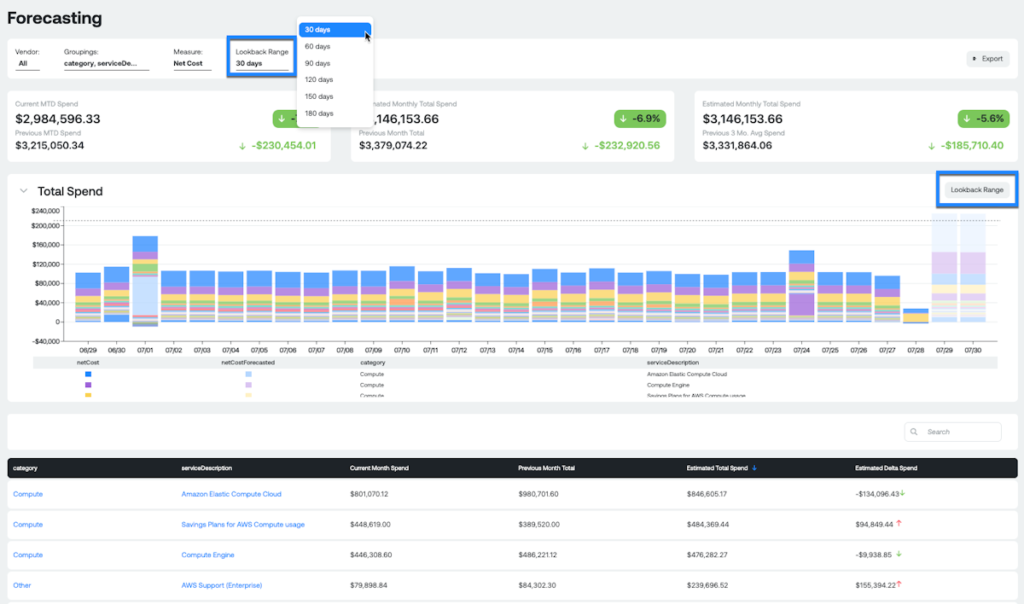
Dashboards: increased widget limit
At Ternary, we continually improve dashboards to help you access the information that’s most important to your business. In January, we introduced the ability to configure the dashboard layout and adjust the size and location of widgets. With our latest release, we have extended the widget limit on dashboards from 12 to 16. This added flexibility and customization enables you to build more complex and comprehensive dashboards to suit your data visualization needs.
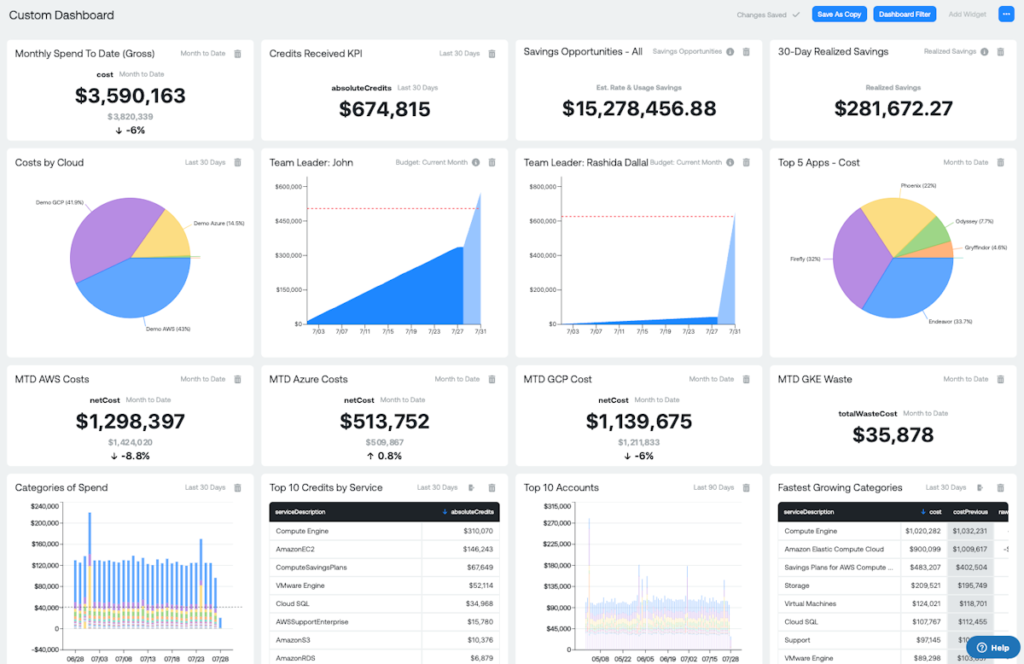
Microsoft Azure: enhanced cloud configuration
As part of our dedication to provide streamlined provisioning, we have enhanced the Microsoft Azure cloud configuration process. If you’re unaware of the cloud bill or subscription type, you can select “Automatically Detect Plan Type.” Ternary will attempt to identify the type from a known list. (Read more about why Ternary is the best FinOps platform for Microsoft Azure.)
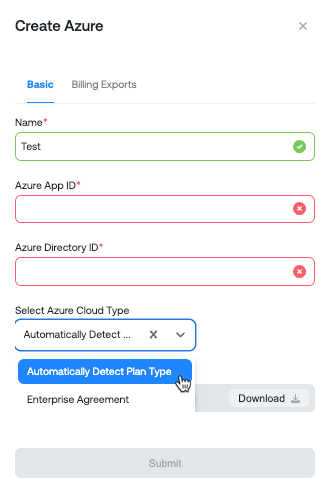
Ramp Plans: historical cost data
Ternary Ramp Plans allow you to visualize the financial commitments you’ve contracted to make to a cloud service provider. You can then compare them against what you actually spend over a given period of time, and plan accordingly. Breakpoints divide the time period within a Ramp Plan for easier forecasting and benchmarking. July’s release enables you to toggle on the “Populate Historical Cost Data” option when creating a new Ramp Plan. This will automatically generate monthly breakpoints, beginning with your earliest commitment period start date.
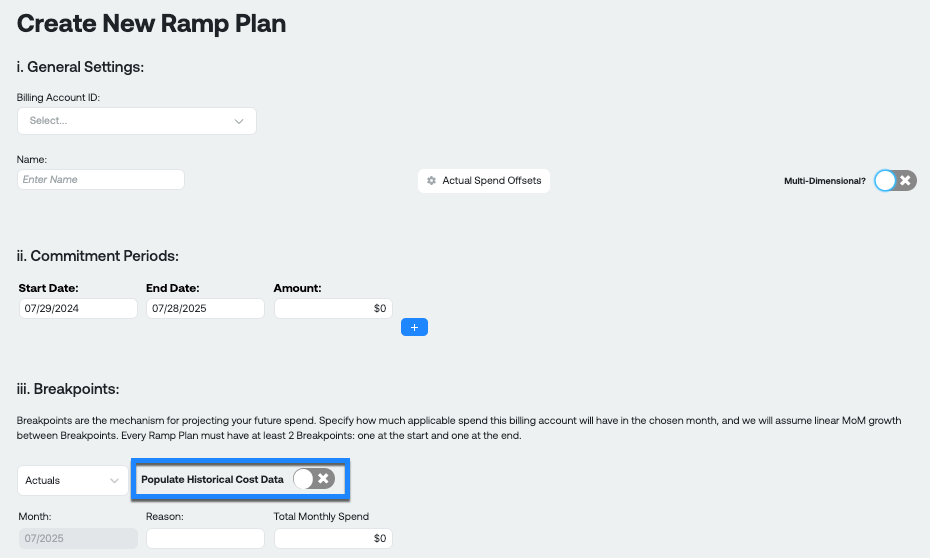
The Ternary team is dedicated to helping our customers and partners throughout their FinOps journey. Stay tuned for next month’s product enhancements.
Learn more about how Ternary can help you tame your organization’s cloud spend.

